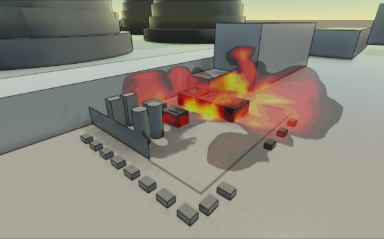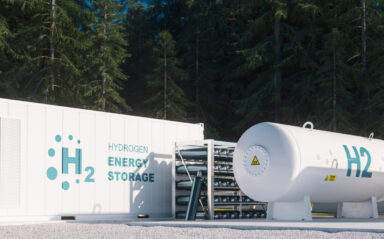
Consequence analysis: 10 things to consider before performing your study
Consequence analysis is a critical aspect of process safety and risk management. Here are 10 crucial considerations to ensure a successful analysis.

Hydrogen bulk storage areas: How advanced consequence modelling can inform a safer design and help reduce the risks from explosions
At this year’s Gastech Conference and Exhibition, Dr Karina Almeida Leñero and Pablo Giacopinelli will present a study of several explosion scenarios in a hydrogen storage facility, conducted using the CFD consequence modelling tool, FLACS-CFD.

Using advanced modelling tools to understand the hazards associated with liquid hydrogen in the aviation industry
Due to its unique flammability characteristics, the use of LH2 in aviation presents several safety challenges, from the materials used through aircraft refuelling procedures to the storage of large amounts of LH2 at or near the airport.
At the International Hydrogen in Aviation Conference, Gexcon will discuss how to use advanced modelling tools to understand LH2 hazards in the aviation industry….

Piper Alpha: 34 years of explosion modelling software development
The development of Gexcon’s industry standard software for dispersion, explosion and fire modelling is closely linked to Piper Alpha.

CFD Analysis of Explosions with Hydrogen-Methane-Air Mixtures in Congested Geometries
Blending hydrogen into the natural gas grid will support the de-carbonising effort in the energy system.
However, the safe use of hydrogen as a fuel presents different challenges than conventional hydrocarbon-based fuels.
At the 2022 International Loss Prevention Symposium, Gexcon will present the result of CFD-based explosion analysis of hydrogen-methane-air mixtures which was performed using FLACS-CFD consequence modelling software.

Ammonia Risk Assessments – How advanced consequence modelling can improve safety management
Advanced consequence modelling can improve ventilation/dilution levels and detection times from common leaks during ammonia risk assessments.

Celebrating our community of FLACS-CFD users
Chris Coffey, FLACS-CFD Product & Strategic Business Development Manager, reflects on the success of Gexcon’s very first FLUG Week.

Designing bulk hydrogen storage using CFD – Why it is important
Using our flagship CFD modelling tool FLACS-CFD, Gexcon conducted several case studies on real facilities looking at the design of bulk storage areas in terms of safety during an ignited event, using relevant standards and documentation for guidance.

Working with the UK’s first ever multifunctional LNG Terminal.
Gexcon Consulting recently worked with the UK’s largest LNG storage facility located on the Isle of Skye, Scotland. The facility is located at a fish feed production factory and therefore presents a very different level of risk than the primary operations.

Modelling dense gas dispersion in urban environments
Unsuitable dispersion modelling may under/ over predict the dense gas hazards, resulting in the implementation of unnecessary risk reduction measures.

Ensuring safe biogas production using CFD-based risk analysis
Gexcon Consulting has recently assisted several biogas facilities in their risk analysis. An interesting case involved an LBG production facility located in hilly terrain and close to residential areas.

Geometry and explosions
Geometry has long been identified as of key importance to understanding the consequence of explosions. Flame speed and explosion pressure strongly depend on the gas cloud and the geometrical conditions. Chris Coffey, Global FLACS Product & Strategic Business Development Manager, explains.